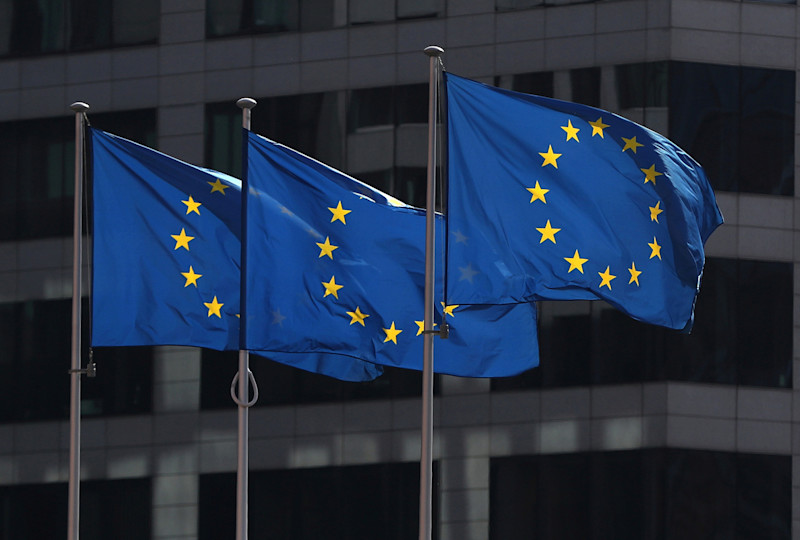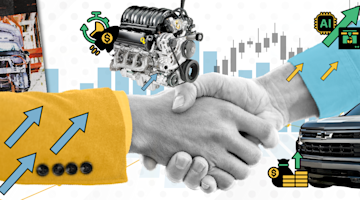In Europe, machine tool consumption is slowly recovering. It ended 2020 at nearly $15 billion (not including Eastern Europe), which was slightly better than projected. The demand is expected to continue to grow in 2021. Driven by the European Union’s Green Deal, Central Europe is coming to terms with the inevitable demise of coal mining and the diversification of renewable energy sources. To further drive demand, Western Europe is implementing agritech, progressive technology for agriculture, and the U.K. has introduced a “super-deduction” for investments in capital equipment. Russia also strives to attract industrial investors through incentives and by spending money on modern technology. For more industry intel and other tidbits, read on.
A total of 240,000 people still work in the coal industry in the EU, but the days of coal mining are numbered. In implementing the EU Green Deal, some $180 billion will be spent on the energy transformation scheme over the next seven years alone. The plan is to eliminate coal from the energy mix by 2050.
One challenge is dealing with the post-industrialization of the coal mining regions. The goal is to maximize the application of a green infrastructure, which would create jobs in the service sector of green-friendly industries.
In Poland’s city of Katowice, a stronghold of coal mining, the mining industry occupied 45% of city space in 2019. To replace it, there has been a rapid rise of a logistics infrastructure suitable for e-commerce and a push for electric vehicle (EV) and battery plants.
Poland’s first EV plant will be built near Katowice, with production starting in 2024. According to the government’s e-mobility development plan, it is predicted that by 2025, the total number of locally manufactured EVs will increase to over one million.
In December 2020, the Fiat Chrysler Automobiles Group announced it will invest more than $200 million in its plant near Katowice, where production is expected to start on new hybrid and electric models for Jeep, Fiat, and Alfa Romeo in the second half of 2022.
Industrial space developers Panattoni and 7R have announced a brownfield logistics project on post-mining and post-ironworks plots in Katowice, set to be unveiled in 2021. In 2020, Panattoni spent nearly $3 billion in Poland and the Czech Republic.
In 2020, Europe saw a 137% annual increase in EV sales, surpassing China as the leading market. As a result, European markets have attracted a significant number of foreign battery projects, including Germany (34), Hungary (13), and Poland (12).
The U.K. government is also aiming to develop its EV industry, with $360 million of funding allocated for a Gigafactory to produce batteries. The West Midlands region, which is home to several major automotive manufacturers, has developed proposals for a Gigafactory at Coventry Airport to create 4,000 new jobs and bring a total of $2.4 billion in investment.
The European machine tool association, CECIMO, predicts that despite the prolonged fluctuations of the machine tool consumption within the European markets, it will increase to at least $19 billion by 2024 (this does not include Eastern Europe).
In the Netherlands, VCs have been investing in agritech firms Connecterra, which will start using AI to improve productivity and sustainability in dairy farming, and the Kingfish Company, which farms using recirculating aquaculture systems. Robotic capabilities and multiple technologies are applied not only in Dutch agriculture but also in neighboring countries.
In the U.K., a new tax scheme allows companies investing in qualifying new plants and machinery assets to benefit from a 130% first-year capital allowance deduction. This makes the U.K. capital allowance regime one of the most competitive in the world.
These super deductions are expected to temporarily increase the level of business investment by approximately 10% at their peak in 2022-2023, an equivalent of about $15 billion per year.
The U.K. government also announced the final list of eight freeports, special economic zones where a 100% tax deduction for companies investing in plant and machinery will remain available until Sept. 30, 2026. Freeports will enjoy simpler planning; infrastructure funding; cheaper customs with favorable tariffs, VAT, or duties; and lower taxes, with tax breaks to encourage construction, private investment, and job creation.
According to the U.N., the greenest megalopolis in the world in 2019, upstaging Hong Kong and Berlin, was the city of Moscow, which has been working for years to create a sustainable business climate that meets international standards. In 2019, investments in the city’s fixed assets amounted to almost $50 billion, an increase of more than 2.3 times in 10 years. At present, against the odds, 14 investment priority projects are being implemented in Moscow, including the creation of techno parks, an industrial park, food production facilities, and a plant to produce automotive components. The total investment volume is around $400 million.
For more information, please contact Hubert Sawicki at hsawicki@AMTonline.org.






